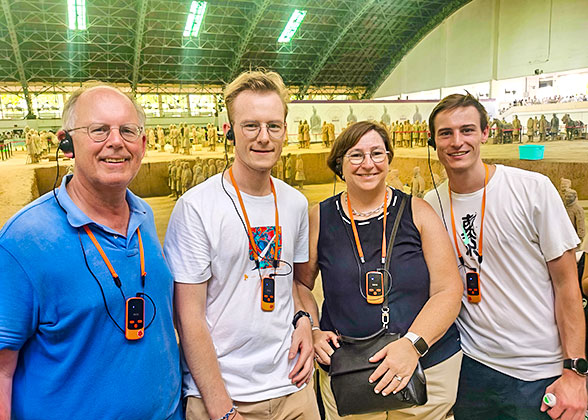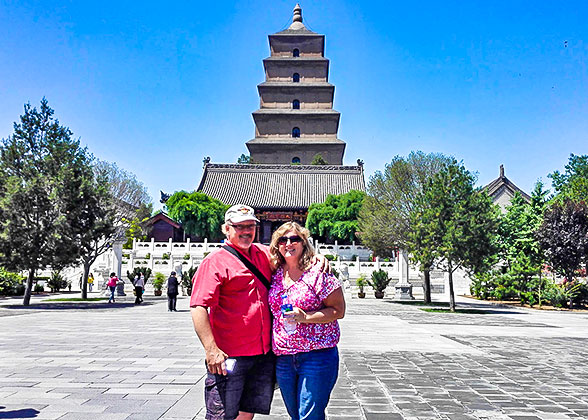Current archaeological discoveries and historical records strongly indicate that the real owner of the
Terracotta Army was
Emperor Qin Shi Huang (259 - 210 BC), the first emperor of China. It was he, after unifying the country, who possessed the vast resources and motive to construct such a magnificent underground army. However, some people suggest the terracotta army might belong to Empress Dowager Xuan, also known as Mi Yue, Qin Shi Huang's great-great-grandmother.
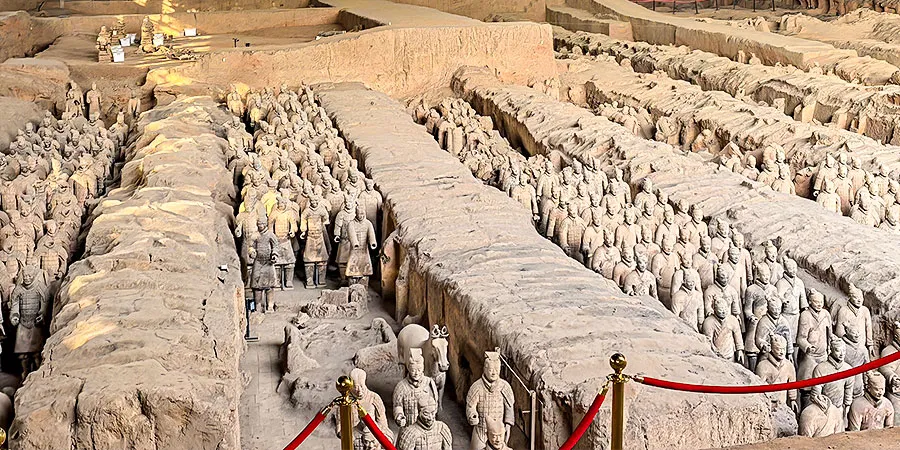 |
| Grand Terracotta Army Pit 1 |
Mainstream View: Terracotta Army's Real Owner Is Emperor Qin Shi Huang.
Evidence 1: Bronze weapons inscribed with "Lü Buwei"
One of the strongest pieces of evidence is the bronze weapons found in pits inscribed with the name of "Lü Buwei," who was the chancellor of Qin Shi Huang. The presence of his name directly dates the origin of these weapons, and therefore the army, to the time of Emperor Qin Shi Huang.
Evidence 2: Weapons bearing the official title "寺工"
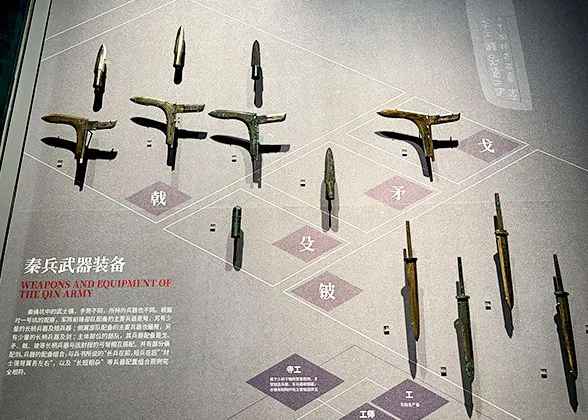 |
| Weapons Inscribed by Official Institution Name |
To date, 21 weapons with clear inscriptions from Qin Shi Huang's era have been discovered. Some carry the Chinese characters for "寺工," an official institution under the central government's administration. This institution is recorded as first established in the second year of Qin Shi Huang's reign and was responsible for casting weapons and chariot fittings for the imperial court, providing strong evidence that the Terracotta Army was built during his time.
Archaeologists point out that the terracotta figures and cultural relics excavated from the terracotta warrior pits are completely consistent with those found in other burial pits within the inner walls of Qin Shi Huang's mausoleum. They share the same materials, artistic styles, and manufacturing techniques. This consistency strongly supports the idea that the Terracotta Army belongs to Emperor Qin Shi Huang.
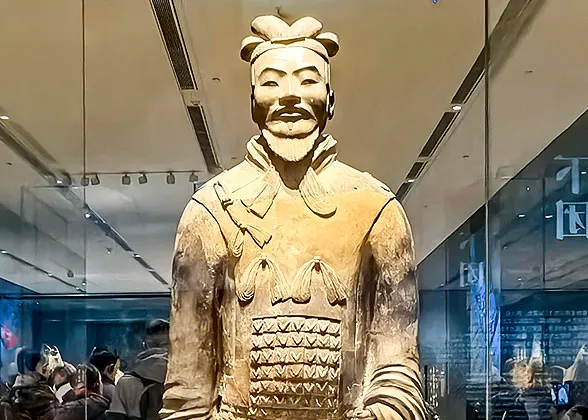 | | Terracotta Warriors Unearthed from Pit 2 | | 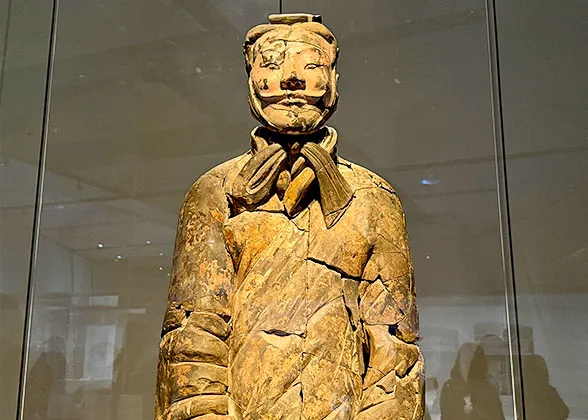 | | Civil Official Figure Unearthed from Pit K0006 | |
 You May Like:
You May Like:
Other Argument: Terracotta Army's Real Owner Is the Empress Dowager Xuan
Reason 1: The Terracotta Army faces Empress Dowager Xuan's homeland and is near her supposed burial site.
The terracotta army faces east toward the state of Chu, which was Empress Dowager Xuan's hometown. Some believe this symbolized an honor guard for her spirit's return to her homeland. Furthermore, historical records suggest her tomb was near Mount Li, close to where the Terracotta Army was found.
Reason 2: Discovered bronze weapons better match the metallurgical level of Empress Dowager Xuan's era.
While iron weapons had already started to be widely used during the Qin dynasty (221 - 207 BC), most of the weapons found in the pits are made of bronze, which was relatively outdated. Such a powerful emperor as Qin Shi Huang, who could unify the six states, probably wouldn't have equipped his main army with outdated bronze weapons if iron ones were available. It is believed that these bronze weapons were more likely to align with the technological level of Empress Dowager Xuan's earlier era.
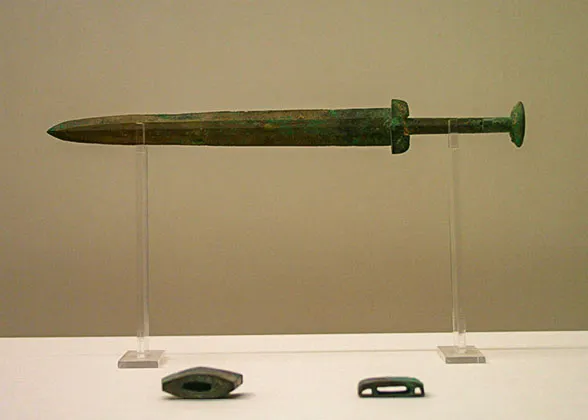 | | Bronze Sword Excavated from Terracotta Army | | 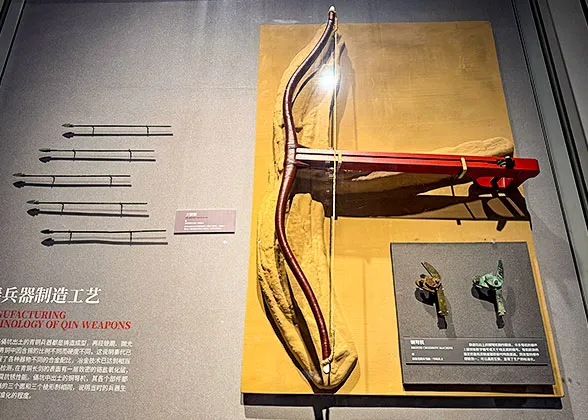 | | Bronze Crossbow Mechanism | |
Reason 3: The attire and hairstyles of terracotta figures resemble styles from Empress Dowager Xuan's era.
The terracotta figures excavated from the Terracotta Army were originally painted with clothing in many bright colors. Specifically, terracotta figures from Pit 1 wore armor in red, green, purple, light blue, and white, while those from Pit 3 displayed thirteen shades, including vermilion, rose red, and pink. This appears to contradict the historical fact that the Qin dynasty favored black. Additionally, many terracotta figures have topknots tilted to the right, a style consistent with the hairstyle of the state of Chu. Among the rulers of the Qin dynasty, only the Empress Dowager Xuan was a Chu native.
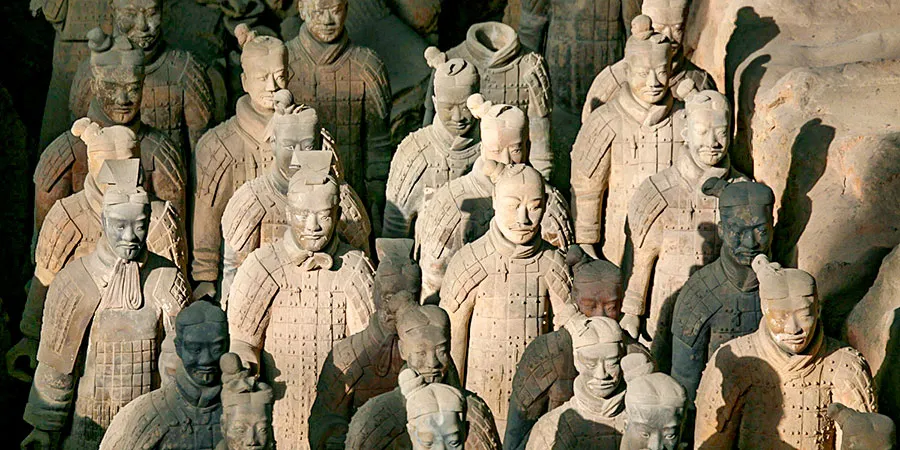 |
| Terracotta Warriors with Right-tilted Topknots |
Regarding above mentioned viewpoints, archaeologists have also provided negative answers and corresponding reasons based on archaeological facts and historical records.
1. The mausoleum of Qin Shi Huang is an extraordinarily large project, covering an area of 56 square kilometers (13,800 acres). The location of the Terracotta Army to the east of the main mausoleum fits perfectly with the layout concept of it serving as the "underground army" to guard the capital city. Facing east served a dual purpose: it protected the main entrance to the mausoleum and symbolized Qin Shi Huang's powerful military ambitions that conquered the eastern six states. Although the terracotta army pits seem relatively far from the mausoleum, considering their sizes, the scale is proportional to the overall complex.
2. Additionally, while the iron smelting technology in the Qin dynasty was quite advanced, experts believe the transition from bronze to iron weapons was a gradual process. Current archaeological findings show that the majority of weapons excavated from Qin sites are still bronze, with iron weapons being extremely rare. Furthermore, bronze, in which Qin craftsmen achieved peak mastery, was more decorative and corrosion-resistant, making it ideal for ceremonial burial objects.
3. Finally, Qin law did not require everyone to wear black. Regulations specified that high-ranking officials wore green robes, while commoners wore white. The idea that everyone in the Qin dynasty wore black is a misconception. Soldiers' daily uniforms could have been colorful. As for the right-tilting topknots, this was a common fashion in the Qin region itself, not specific to Chu. Due to generations of intermarriage between the Qin and Chu royal families, cultural exchange was natural. Therefore, the presence of this hairstyle does not specifically indicate Chu influence or ownership by Empress Dowager Xuan.

Further Reading:
- Last updated on Oct. 23, 2025 by Doris Xue -


![]() You May Like:
You May Like:




